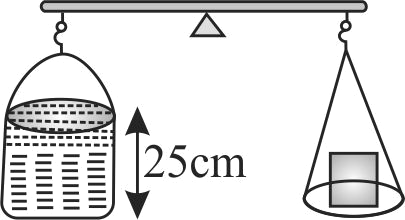360848 Water is flowing at a speed of \(1.5\;m{s^{ - 1}}\) through horizontal tube of cross-sectional area \({10^{ - 2}}\;{m^2}\) and you are trying to stop the flow by your plam. Assuming that the water stops immediately after hitting the plam, the minimum force that you must exert should be (density of water \( = {10^3}kg{m^{ - 3}}\) )
360848 Water is flowing at a speed of \(1.5\;m{s^{ - 1}}\) through horizontal tube of cross-sectional area \({10^{ - 2}}\;{m^2}\) and you are trying to stop the flow by your plam. Assuming that the water stops immediately after hitting the plam, the minimum force that you must exert should be (density of water \( = {10^3}kg{m^{ - 3}}\) )
360848 Water is flowing at a speed of \(1.5\;m{s^{ - 1}}\) through horizontal tube of cross-sectional area \({10^{ - 2}}\;{m^2}\) and you are trying to stop the flow by your plam. Assuming that the water stops immediately after hitting the plam, the minimum force that you must exert should be (density of water \( = {10^3}kg{m^{ - 3}}\) )
360848 Water is flowing at a speed of \(1.5\;m{s^{ - 1}}\) through horizontal tube of cross-sectional area \({10^{ - 2}}\;{m^2}\) and you are trying to stop the flow by your plam. Assuming that the water stops immediately after hitting the plam, the minimum force that you must exert should be (density of water \( = {10^3}kg{m^{ - 3}}\) )

